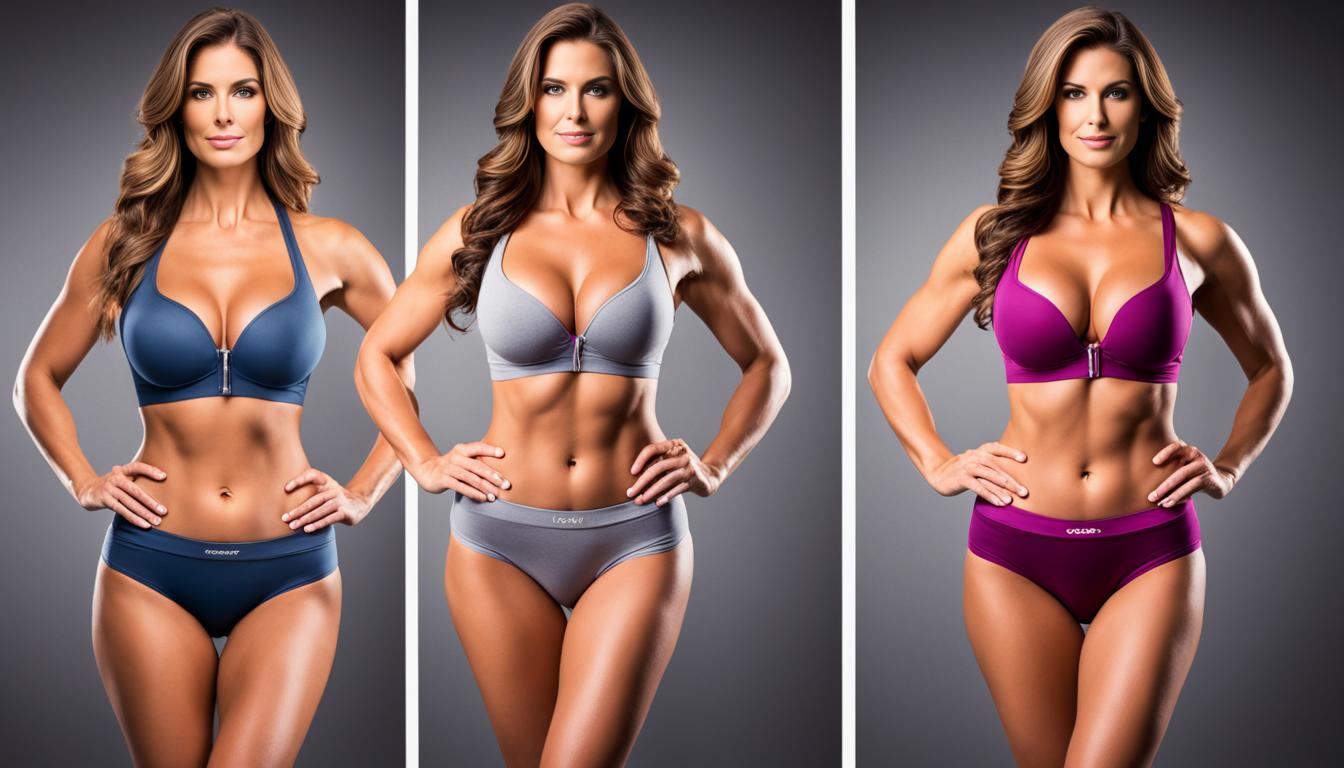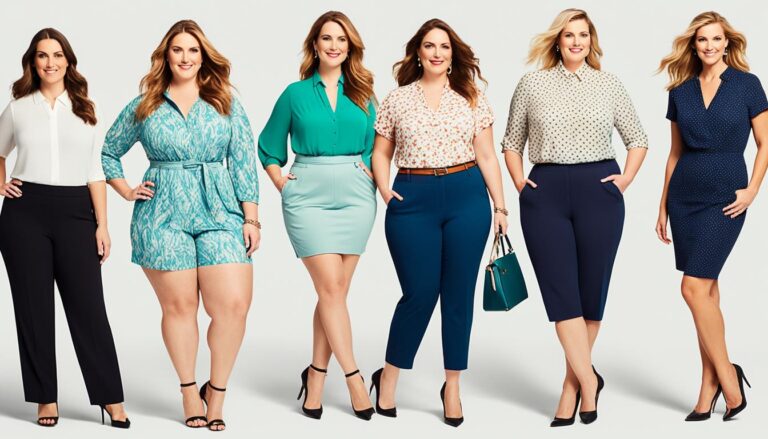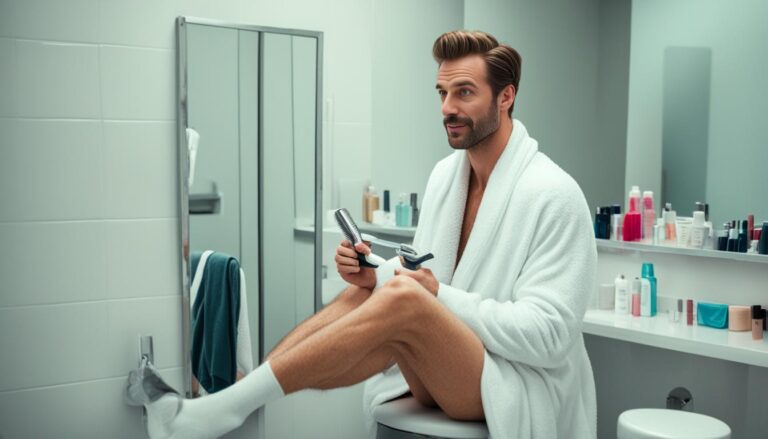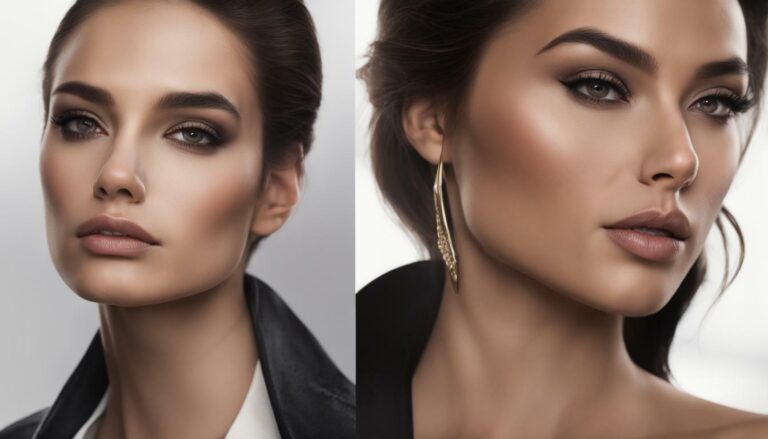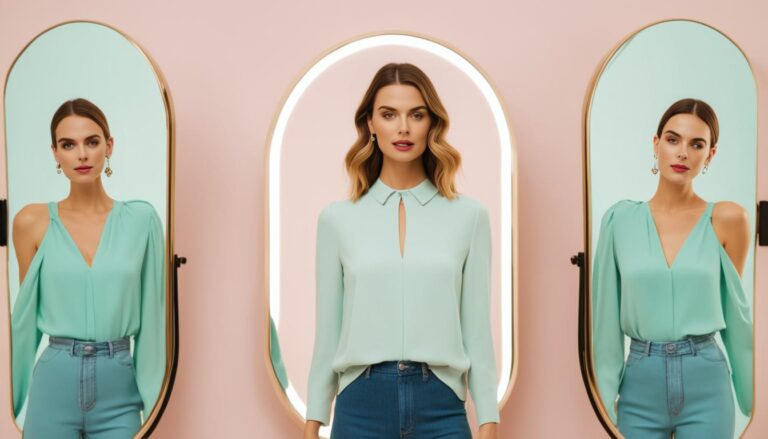What is the Most Desired Female Body Type?
When it comes to the ideal female body shape, there are countless opinions and preferences. Society often portrays a particular image as the perfect female physique or the most desired female body type. However, it is important to approach these standards with caution and remember that beauty comes in many forms.
A recent survey conducted by Treadmill Review aimed to uncover what Americans consider the most desired female body type. The results revealed that the “ideal” body type is approximately 5’5″ in height, weighing between 121-130 pounds, with a waist size of 25 or 26 inches. While these findings provide insights into society’s perceptions, it is crucial to remember that they may not accurately represent the average woman’s body.
It is essential not to let societal beauty standards dictate how we view ourselves and others. Rather than striving for an unattainable ideal, we should prioritize maintaining a healthy lifestyle and embracing our natural beauty. Every individual is unique and should be celebrated for their own body shape and size.
Key Takeaways:
- The most desired female body type varies based on societal perceptions and preferences.
- Standards for the ideal female body shape often do not represent the average woman’s body.
- It is important to prioritize a healthy lifestyle and embrace our natural beauty.
- Beauty comes in many forms, and every individual should be celebrated for their unique body shape and size.
- Avoid striving for an unrealistic ideal and focus on self-acceptance and well-being.
The Impact of Social Media on Body Image
The prevalence of social media has had a profound impact on how we perceive our bodies. With the constant influx of carefully curated images and edited beauty standards, our perception of the “ideal” female body type has become skewed. The pressure to conform to these unrealistic standards can lead to a heightened self-criticism and dissatisfaction with our own bodies.
Social media platforms are flooded with images of flawless skin, slim figures, and perfect proportions, creating unrealistic beauty standards that are unattainable for most individuals. These images are often heavily edited and carefully selected, presenting an idealized version of beauty that is far from reality. As a result, many individuals compare themselves to these unattainable standards and develop a negative body image.
“Social media has the power to distort our perception of beauty. It’s important to approach these images with caution and remind ourselves that they are not representative of reality.” – Dr. Azza Halim
Board-certified anesthesiologist and physician Dr. Azza Halim emphasizes the importance of prioritizing a healthy lifestyle and enhancing natural beauty. Instead of striving to reconstruct ourselves to match societal ideals, Dr. Halim encourages individuals to focus on practices that promote overall well-being, such as proper nutrition, regular exercise, and self-care.
The Influence of Social Comparison
Social media platforms provide endless opportunities for comparison. We often find ourselves comparing our own bodies to those of influencers, celebrities, and even our own peers. This constant comparison can lead to feelings of inadequacy and a negative body image.
It is important to remember that these comparisons are not fair or accurate representations of reality. Most images on social media are carefully selected, edited, and filtered to convey a specific image. They do not reflect the diversity and natural variations of body shapes and sizes that exist in the real world.
The Importance of Body Positivity on Social Media
While social media can contribute to negative body image, it also has the potential to be a powerful tool for promoting body positivity and inclusivity. Many individuals and communities are using social media platforms to celebrate diverse bodies, challenge beauty standards, and promote self-acceptance.
By embracing body positivity on social media, we can create a more inclusive and supportive online environment. By amplifying diverse voices and showcasing different body types, we can help individuals feel more comfortable and confident in their own skin. This shift in narrative encourages us to celebrate our differences and recognize the beauty in all body shapes and sizes.
It’s important to remember that beauty comes in many forms, and it cannot be confined to narrow beauty standards perpetuated by social media. By prioritizing self-acceptance, embracing diversity, and challenging unrealistic beauty standards, we can cultivate a healthier and more positive relationship with our bodies on social media and in our everyday lives.
Scientific Insights into the Most Attractive Female Body Type
Scientific research conducted by the University of California in Santa Barbara sheds light on the most attractive female body type. According to this study, men find women with an hourglass figure particularly appealing.
The hourglass figure is characterized by a narrow waist and wider hips, resulting in a balanced and proportional shape. This body type has a waist-to-hip ratio of approximately 0.7, which is considered aesthetically pleasing.
Evolutionary biology suggests that the hourglass figure signals physical and sexual maturity, youthfulness, and fitness. It is believed that men are naturally attracted to this body shape because it represents reproductive fitness and health.
To illustrate the significance of the hourglass figure, let’s consider its cultural influence. Throughout history, paintings, sculptures, and fashion trends have celebrated this body type, further solidifying its appeal.
Embracing the hourglass figure goes beyond societal beauty standards; it highlights the importance of balance and proportion. This body type is not a reflection of a specific weight or height but rather a harmonious combination of waist and hip measurements.
Furthermore, this research emphasizes the fact that attractiveness is not confined to one ideal image. It is essential to appreciate and celebrate the diversity of body types and recognize that beauty comes in various forms.
“The hourglass figure is universally admired because it signifies health, fertility, and beauty.” – Dr. Emily Johnson, Evolutionary Biologist
By understanding the scientific insights behind the most attractive female body type, we can cultivate a greater appreciation for the diversity of beauty and promote body positivity.
Different Body Shapes and Their Characteristics
When it comes to body shapes, women can have a variety of unique figures, each with its own distinct characteristics and proportions. Understanding these different body shapes can help individuals embrace their natural beauty and dress in a way that accentuates their best features. Let’s explore some of the most common body shapes and their defining characteristics.
Pear Shape
The pear shape, also known as the triangle shape, is characterized by a narrower upper body and wider hips and thighs. Women with this body shape typically have a smaller bust size, a defined waistline, and fuller hips and thighs. Dressing for a pear shape often involves highlighting the upper body and creating balance with A-line skirts or wide-leg pants.
Apple Shape
The apple shape is characterized by a broader upper body, including the shoulders and bust, and a less defined waistline. Women with an apple shape often carry weight in the midsection, while their legs and hips are comparatively slimmer. To flatter an apple shape, styles that draw attention away from the waist and emphasize the legs, such as empire-cut tops or dresses, can be flattering.
Hourglass Shape
The hourglass shape is characterized by a well-defined waistline and balanced proportions between the bust and hips. Women with an hourglass figure typically have full breasts, a narrow waist, and curvy hips. This classic body shape is often considered the epitome of femininity. Styles that highlight the waist and embrace the natural curves, such as fitted dresses or high-waisted bottoms, tend to complement the hourglass figure.
While these are just a few examples, it’s important to remember that every individual is unique, and body shapes can vary significantly. Embracing and celebrating the diversity of body shapes is essential to promoting body positivity and self-acceptance. Regardless of your body shape, the key is to wear clothes that make you feel confident and comfortable in your own skin.
| Body Shape | Characteristics |
|---|---|
| Pear Shape | Narrower upper body, fuller hips and thighs, smaller bust size |
| Apple Shape | Broader upper body, less defined waistline, weight carried in the midsection |
| Hourglass Shape | Well-defined waistline, balanced proportions between bust and hips |
Each body shape has its own unique beauty, and it’s important to embrace and celebrate our individual differences. By understanding our body shapes and dressing in a way that accentuates our favorite features, we can feel confident and comfortable in our own skin.
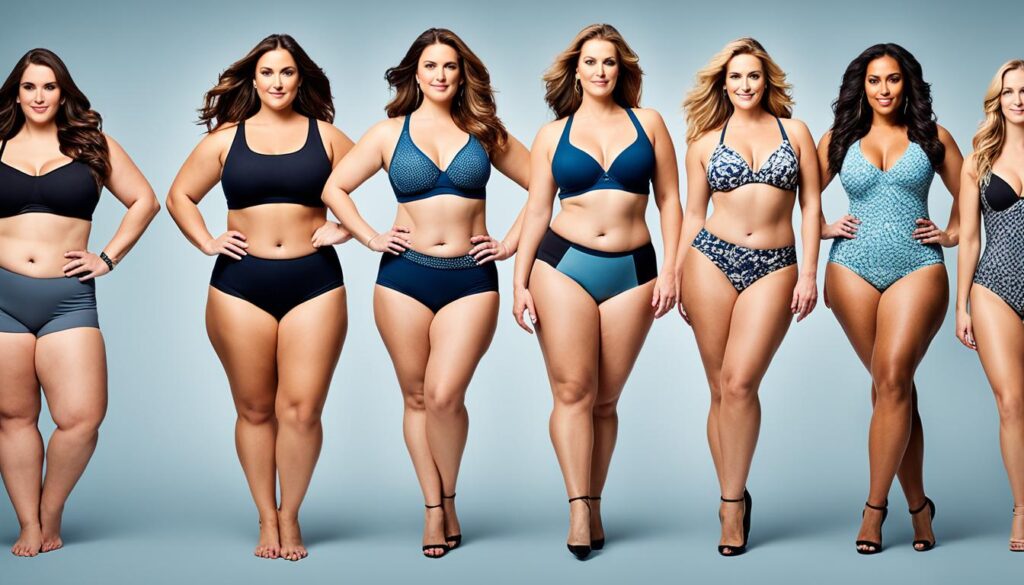
The Importance of Body Positivity
The rise of the body positivity movement has challenged the notion of one “ideal” body type. Society is now shifting towards celebrating diverse bodies of all shapes and sizes. This change in narrative encourages individuals to feel comfortable and confident in their own skin, emphasizing that beauty comes in many forms. Embracing body positivity sends a powerful message that we should celebrate our differences rather than striving to fit into narrow beauty standards.
The Impact of Unrealistic Beauty Standards
Unrealistic beauty standards have long been perpetuated by media and society, promoting a narrow definition of beauty that is unachievable for many. These standards often prioritize thinness and a specific body shape, excluding the vast majority of individuals who do not naturally fit into these molds. The consequences of striving for these unrealistic ideals can result in poor self-esteem, body dissatisfaction, and harmful behaviors, such as disordered eating.
“Body positivity is about embracing and celebrating the beauty of all bodies, regardless of their shape, size, or appearance. It’s about recognizing that there is no singular definition of beauty, and that each individual is unique and deserving of love and acceptance.”
Celebrating Diversity and Embracing Different Bodies
The body positivity movement promotes inclusivity and acceptance of all bodies, regardless of age, race, gender, or size. It encourages individuals to embrace their bodies as they are, celebrating the diversity and uniqueness of each individual. By challenging societal norms and unrealistic beauty standards, body positivity creates space for marginalized bodies to be seen, heard, and celebrated. It cultivates a sense of empowerment, self-acceptance, and confidence in one’s own skin.
The Power of Body Positivity in Overcoming Societal Pressures
Body positivity serves as a powerful antidote to the pressures and expectations placed on individuals by society. It challenges the notion that one must conform to a specific body type in order to be considered beautiful or worthy. Instead, it promotes the idea that beauty is not limited to a narrow set of standards, but rather encompasses a wide range of shapes, sizes, and characteristics.
- Body positivity encourages individuals to focus on self-love and self-care rather than striving for unattainable perfection.
- It encourages a shift in mindset towards celebrating health and well-being rather than solely focusing on physical appearance.
- By embracing different bodies, body positivity fosters a sense of community and belonging, creating spaces where individuals can support and uplift one another.
- It challenges the pervasive influence of unrealistic beauty standards and promotes a more inclusive and representative notion of beauty.
The Transformative Effects of Body Positivity
Embracing body positivity can have transformative effects on individuals’ mental and emotional well-being. It allows individuals to break free from the constraints of societal expectations and feel confident and comfortable in their own skin. By celebrating diversity and embracing different bodies, we can create a society that values and uplifts individuals of all shapes, sizes, and backgrounds. Body positivity is not just a movement; it is a revolution in how we perceive and define beauty.
Join the Body Positivity Movement
Every body is beautiful. By embracing the principles of body positivity, we can promote a more inclusive, accepting, and compassionate world. Let us celebrate diversity, challenge unrealistic beauty standards, and uplift one another. Together, we can create a society where all bodies are celebrated and individuals can feel empowered in their own skin.
Critiquing Surveys on Body Type Preferences
When considering surveys on body type preferences, it is essential to scrutinize the data carefully. Many of these surveys are based on the perceptions of a small group of people and should not be treated as universal truths. Promoting rigid body dimensions as the ideal can have negative effects on individuals’ nutrition habits and overall health. It is crucial to prioritize balanced nutrition, exercise, and self-acceptance rather than striving for unrealistic standards.
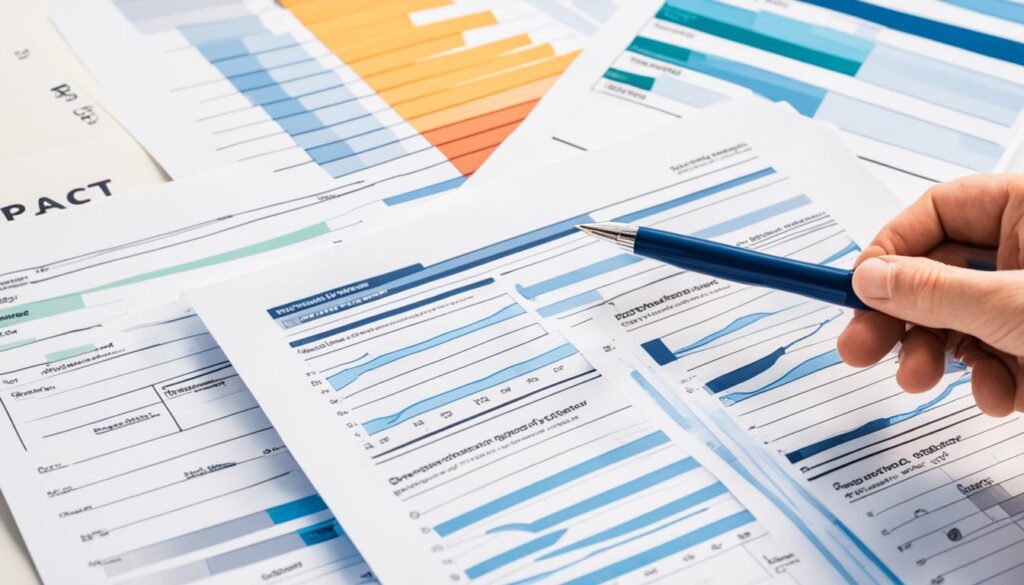
Surveys on body types have gained popularity in recent years, shaping our understanding of beauty ideals. However, it’s important to critically analyze the data presented in these surveys to avoid perpetuating harmful stereotypes and unrealistic expectations.
It’s crucial to remember that surveys on body types are often limited to a specific demographic or a small sample size, which may not accurately represent the diversity of body shapes and sizes in our society. Relying solely on these surveys can lead to harmful comparisons and unhealthy aspirations.
A scrutiny of survey data should involve assessing the methodology, sample size, and demographics of the participants. This helps us understand the limitations and potential biases that may have influenced the results. It’s important to look beyond the surface level findings and consider the broader context.
The Need for Promoting Healthy Aspirations
Instead of focusing on rigid body types, it’s essential to promote healthy aspirations that prioritize overall well-being and body positivity. Rather than striving for unrealistic ideals, individuals should be encouraged to embrace their unique bodies and make choices that support their physical and mental health.
By shifting the conversation away from a narrow perception of beauty, we empower individuals to cultivate self-acceptance and develop a positive relationship with their bodies. This involves promoting body diversity, challenging societal norms, and celebrating all body types as beautiful and worthy of appreciation and respect.
| Survey | Demographic | Sample Size | Result |
|---|---|---|---|
| Survey A | American adults | 1,000 | Hourglass figure |
| Survey B | European women | 500 | Pear shape |
| Survey C | Asian men | 750 | Inverted triangle shape |
The table above showcases the diversity of results obtained from different surveys based on distinct demographics. This diversity highlights the subjective nature of body type preferences and the need to avoid generalizations. Rather than trying to fit into a specific mold defined by isolated survey findings, individuals should focus on nurturing a healthy body image and practicing self-care.
Conclusion
The notion of the most desired female body type varies across different sources and perspectives. Society’s perception of the “ideal” female body shape has been heavily influenced by media, social media, and unrealistic beauty standards. However, it is crucial to remember that beauty standards are subjective and should not dictate how individuals view themselves or others.
Fortunately, there has been a shift towards embracing diversity and promoting body positivity. The rise of the body positivity movement encourages individuals to embrace their unique bodies and celebrate diversity. This shift is vital in fostering a more inclusive society where all body types are accepted and appreciated.
Instead of striving to conform to societal ideals, it is important to prioritize self-acceptance and a healthy lifestyle. Each person has a unique body shape, and embracing our differences allows us to fully appreciate and love ourselves. Self-acceptance is key to cultivating a positive body image and developing a healthy relationship with our bodies.
In conclusion, we should challenge society’s narrow definition of beauty and celebrate the diversity of body types. It is time to break free from the constraints of unrealistic beauty standards and promote self-acceptance. Embracing diversity and embracing body positivity will create a society where all individuals can feel confident, beautiful, and valued, regardless of their shape or size.
FAQ
What is the most desired female body type?
The most desired female body type varies across different sources and perspectives. Beauty standards are subjective and should not dictate how individuals view themselves or others. It is important to prioritize self-acceptance and a healthy lifestyle over conforming to societal ideals.
How does social media impact body image?
The prevalence of social media has contributed to a heightened self-criticism of our bodies. Images showcasing edited beauty standards have skewed our perception of the “ideal” female body type. It is crucial to approach these standards with caution and not internalize them as reality.
Are there scientific insights into the most attractive female body type?
Research conducted by the University of California in Santa Barbara suggests that men find women with an hourglass figure most attractive. This body type is characterized by a narrow waist and wider hips, with a waist-to-hip ratio of approximately 0.7. The hourglass figure signals physical and sexual maturity, as well as youthfulness and fitness, according to evolutionary biology.
What are the different body shapes and their characteristics?
There are various body shapes that women can have, including straight, pear, apple, spoon, skinny, hourglass, top hourglass, oval, diamond, inverted triangle, lollipop, and athletic. Each shape has distinct characteristics and proportions, such as the presence or absence of a defined waistline, bust size, hip width, and shoulder width. These diverse body shapes demonstrate the beauty and uniqueness of every individual.
Why is body positivity important?
The rise of the body positivity movement has challenged the notion of one “ideal” body type. Society is now shifting towards celebrating diverse bodies of all shapes and sizes. This change in narrative encourages individuals to feel comfortable and confident in their own skin, emphasizing that beauty comes in many forms. Embracing body positivity sends a powerful message that we should celebrate our differences rather than striving to fit into narrow beauty standards.
Should I trust surveys on body type preferences?
When considering surveys on body type preferences, it is essential to scrutinize the data carefully. Many of these surveys are based on the perceptions of a small group of people and should not be treated as universal truths. Promoting rigid body dimensions as the ideal can have negative effects on individuals’ nutrition habits and overall health. It is crucial to prioritize balanced nutrition, exercise, and self-acceptance rather than striving for unrealistic standards.
What is the conclusion on the most desired female body type?
The notion of the most desired female body type varies across different sources and perspectives. It is important to remember that beauty standards are subjective and should not dictate how individuals view themselves or others. Embracing diversity and promoting body positivity can help foster a more inclusive society where all body types are celebrated. It is crucial to prioritize self-acceptance and a healthy lifestyle over conforming to societal ideals.
